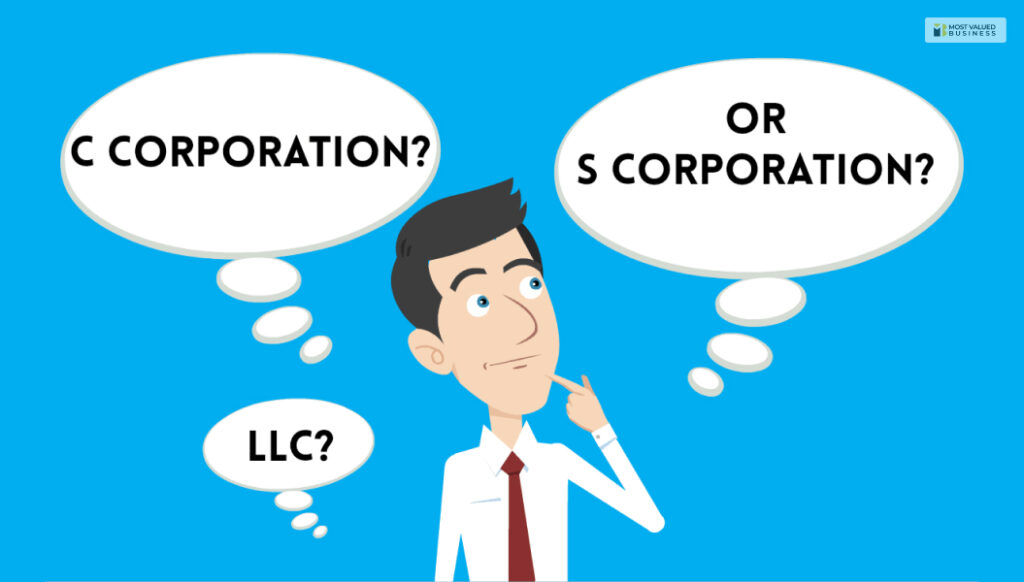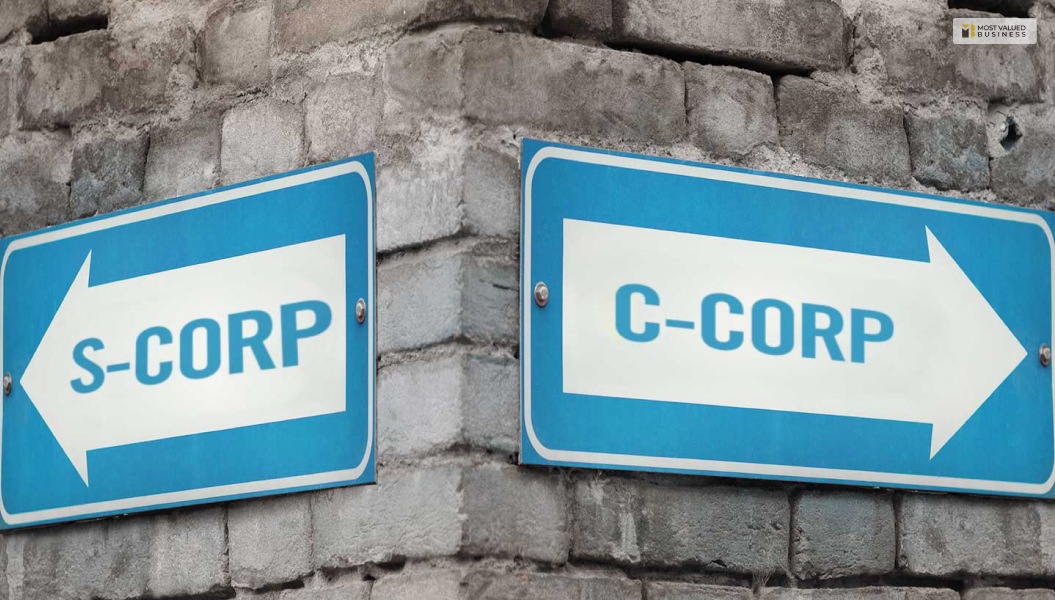What is S Corp? Business Structure And Advantages and Disadvantages
An S Corporation or S Corp is a specified business structure that has the permission to pass all its taxable incomes, deductions, credits, and losses directly to the company shareholders without paying federal corporate taxes.
This acts as an advantage over the other C Corps. S Corp is permitted only to small businesses that have 100 or lesser shareholders and is an alternative to the Limited Liability Companies (LLCs).
S corps and LLCs are popularly called”pass-through entities.” This is because they are not liable to pay corporate taxes but instead have to pay their shareholders, who are in charge of the tax due.
Key Points To Remember

- An S Corp, also called an S Sub-chapter, is a legal business structure permeable among small businesses. LLC is another considerable type.
- S corps have a very certain requirement. A company is only permitted an S corp if they have a hundred or fewer shareholders.
- S Corps and LLCs are both considered pass-through entities, meaning they do not have to pay any corporate taxes, and both serve limited liability protection to the owners.
- The shareholders of S corporations must be individuals, estates, specific trusts, or certain tax-exempt organizations.
Read More: SMB Business – Let’s Discuss 6 Important Characteristics
Understanding The Working Structure Of An S Corp

S Corporations received their name from the Sub-chapter of the Internal Revenue Code. The main characteristic of any S corporation filed under Sub-chapter S is that the company can pass the business profits, deductions, losses and credits rightly to its shareholders without paying federal corporate taxes, which makes it known as a “pass through entity”.
The company receives certain tax benefits under the 2017 Tax Cuts and Jobs Act. Although the company still stays liable to pay taxes on certain corporate levels on very specific built-in profits or passive incomes.
Although you might need clarification about how does an S corp work? The key points to keep in mind about the operational structure of an S Corp are listed below:
- Only the tax status makes it different from any other corporate organization or C corporation as they are officially called. Other than that, the entire working structure stands the same.
- It is a for-profit organization that is incorporated under and is under the governance of the same state corporation laws.
- S Corps offer the same liability protection, management advantages, and ownership as any other C Corporation.
- They must also maintain internal formalities and practices like having a board of directors, conducting shareholder meetings, writing corporate bylaws, and keep conducting other significant company meetings.
So, What Is The Difference Between an S Corp And A Regular C Corporation?

As mentioned before, there are no major differences between the two types of companies. The only difference is how they both operate is how one is taxed.
Profits earned from a C Corp are first taxed to the corporation and only then can be taxed to the company shareholders as dividends, resulting in a double tax payment.
But in S Corps, the profit can be directly passed to the shareholders without paying any other federal taxes.
How Will You Set Up An S Corp?

The first step to setting up an S corporation is for the business to get incorporated. Then it requires to file Form 2553 with the IRS [Internal Revenue Service].
Officially known as Election by a Small Business Corporation, the form declares that the IRS will accept the status of S Corp only if the business has ticked all the qualifications required for the status.
The form also states that all the shareholders must sign their consent. Simultaneously, an officer must sign below, and the accurate name and address of the corporation and all other mandatory information have been provided likewise.
Pros And Cons Of S Corp

Let us now go through the advantages and disadvantages of an S Corporation to understand it as a business better.
Advantages Of S Corporation
The benefits of S Corp are listed as follows:
- The biggest advantage is the tax benefit. Saving money on corporate taxes is advantageous, especially when the company is still in its starting years.
- Having the S Corp status also lowers the personal income tax tab for the company owners. Business owners can reduce their liability for Self Employment Tax by characterizing the money they receive as salaries or dividends.
- Shareholders of an S Corp can be employees, get salaries and receive tax-free corporate dividends only if the distribution limits within their stock basis. The excess is taxed as capital gains if the dividends exceed the stock basis. However, they are taxed at a lower rate than their regular income.
- Another advantage includes transferring interests or adjusting property basis without having to face unpleasant tax consequences or comply with convoluted accounting rules.
- The S corporation status also helps establish credibility with potential customers, future employees, investors, or suppliers by showing the owner’s loyalty to the business.
Disadvantages Of S Corporation
The notable disadvantages of an S Corp are undermentioned as follows:
- S corporations tend to disguise their salaries as corporate distributions to avoid paying payroll taxes. Therefore, the IRS has scrutinized the way the S corps pay its employees. S corporations must pay decent salaries to shareholders/employees for their services contributed before any distributions are made.
- When the distributions are in order, the S corporations must issue the profits and losses sternly based on the percentage of ownership or the part of shares individual holds.
- In rare cases, the IRS might terminate the Sub-chapter status of an S Corp if the profits and losses are not allocated properly or due to certain noncompliance errors. In those cases, a quick rectification of such errors can help to avert any major adverse consequences.
- In many states, S corporation owners must pay an annual report fee, franchise tax, and other fees. However, these charges are inexpensive and can be deducted as costs of doing business.
- The limited number and nature of shareholders might be inconvenient for a rapidly growing business whose main motive will then be attracting venture capital and institutional investors.
Read More: How To Start A Business With No Money? : Start A Business When You Are Broke
The Final Wrap Up
By now, you are aware of what is an S corporation and its working structures, advantages, and disadvantages. In simple words, an S Corp can be called a “corporate lite” business structure as they are easier to establish and maintain than other C corps.
Though profitable for small businesses, S corps are subjected to restrictions regarding their size and shareholders by the IRS.
The good news is, it is precisely easy to change the status to a C Corp if the business conditions prove affirmative to do so.
Read Also:



